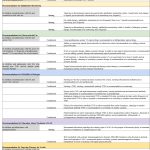
Dr. Cron
“Steroids are powerful immunosuppressive medications that help our children in a lot of ways,” he says, “but they have so many shortcomings and long-term side effects that anything you can do to get patients onto a lower dose and/or off them is a good thing. That often means earlier adoption of DMARDs and, especially, biologic DMARDs for patients with some of our diseases.”
Dr. Onel remarks on the incredible progress that has been made in treating these conditions in the past 30 years, when glucocorticoids were the treatment mainstay. “All those hip replacements, all of those kids who were unnaturally short, who had terrible bones—we don’t see that anymore.” But she thinks we still might do a better job of escalating treatment when necessary because non-pediatric rheumatologists, in particular, tend to undertreat and rely too heavily on steroids and NSAIDs.7
“We are trying to say in these guidelines that children tolerate medicines,” she says. “We provide guidance on how to monitor them and keep them safe, but you must treat them adequately.”
Emphasis on shared decision making
These guidelines also place a strong emphasis on the need for shared decision making among caregivers, patients and clinicians. Such an emphasis is perhaps even more important in a context such as JIA, which relies on a lower-quality-evidence base than some conditions and which contains many more conditional (vs. strong) recommendations. “We have options about which drug to choose and when to start them,” says Dr. Cron, “so having [patient and caregiver] input is valuable.”
Recommendations
Some of the key recommendations in the new JIA guidelines are described below. See the complete guideline documents for additional recommendations, details and context.1,2
Treatment for Active Oligoarthritis
Recommendation: For initial therapy for patients with active disease, the panelists conditionally recommend a brief trial of NSAIDs as part of therapy. Note: The guideline writers chose not to include recommendations on specific time frames for treatment escalation for oligoarthritis or the other JIA subtypes discussed. “The point we were trying to make is that if [a therapy] isn’t working, you need to move on—especially if the patient is getting worse,” says Dr. Onel.
Recommendations: The guidelines strongly recommend against oral glucocorticoids, but strongly recommend in favor of intra-articular glucocorticoids.1
Intra-articular steroids are appealing for their low potential for causing adverse effects and high likelihood of a sustained response. Triamcinolone hexacetonide, a long-acting version, has been unavailable in the U.S. for many years, but the U.S. Food & Drug Administration recently allowed it specifically for joint injections in patients with JIA.


